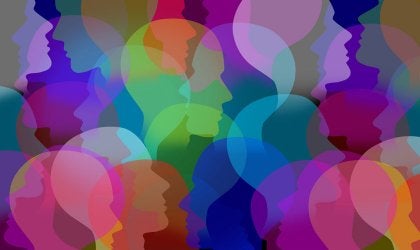Neuroscience reveals countless brain secrets. Staying alone with his biological vision would limit much of his essence and lose his other great value: cultural. That’s why areas like social neuroscience focus their interest on these other “synapses,” those between mental processes and our social practices.
One thing many neuropsychologists advocate is the need to articulate, in the same theoretical scenario, the science of brain study with the other areas of knowledge that make up our world today.
- In fact.
- It is becoming increasingly common to hear terms such as ‘Neuroeconomy’.
- ‘Neuroeducation’.
- ‘Neuromarketing’ or ‘neurolinguistic’.
- Etc.
“Each new generation tries to cultivate what is inherited by its predecessors, so every young man is forced to do much better than his parents to leave a better legacy to his successors” – Emile Durkheim-
Addressing from a multidisciplinary perspective the challenges that, in principle, would be of a single specialty would allow us to increase our knowledge exponentially.
Thus, fields such as social neuroscience are currently being profiled as a necessary resource to understand processes as relevant as our social behavior, aggression and violence, stress and empathy.
Therefore, the objective cannot be more ambitious. The objective is to incorporate into social, cultural, economic and educational theory all research related to the theory of the mind, brain, genes, etc.
In this way, we can analyze much better how all the social processes that make up a given society are generated and developed.
We’ve all heard of mirror neurons. In 1996, the team of Giacomo Rizzolatti, a well-known neurologist at the University of Parma, Italy, discovered a curious group of neurons that were only activated when people (and also animals) observed the behavior or emotional expressions of their peers. . .
It was a breakthrough in behavioral sciences and biology, in addition to social neuroscience, mirror neurons are these organic foundations that facilitate understanding the behavior of others, allowing us to imitate certain actions to learn, in addition to helping us in social interaction. They are, so to speak, the basic components of our culture.
This fact is just one example, a sample of how our neural, hormonal and cellular mechanisms have built what we mean by culture and society, perhaps the first interested in this field of study were anthropologists of the early twentieth century.
Thus, names such as Robert Hertz, a disciple of Émile Durkheim, laid the foundations of this discipline with essays such as those related to the ambidextrous Maori faculties and their brain development in relation to their culture.
Following these early works of anthropologists and sociologists to understand the link between the psyche and the development of cultures, psychologists Cacioppo and Berston wanted to go further and create the Society of Social Neuroscience.
This decision was, in fact, a challenge for psychologists and neurologists of the time, as many of them did not understand how they could go further on something that went beyond the limits of the human skull.
However, the pressure of countless scientists, sociologists and biologists has finally shaped this field of knowledge, responding to a fundamental and urgent need, culture cannot be understood if we do not first understand the mental dynamics that drive the processes that make up our sociological fabric. .
We can also say otherwise. Our culture and all its products, guidelines and programs determine who we are, how we process information, and even how we feel.
It’s a direct and powerful two-way influence. Thus, social neuroscience is a branch of cognitive neuroscience that allows us to understand social behavior and, in turn, to understand the mechanisms with which we generate new values, we configure new behaviors and needs in a world that continues to change and follow the front.
Every cultural and social expression is the product of our brains, think, for example, of the music of the Beatles, each of them is the essence of a historical moment, as well as a sample of our musical culture.
Now, if we go further, we can also study how and how it was created, what neural mechanisms shape inventiveness and creativity, and how, in turn, this music and these words are capable of commovering today.
On the other hand, an essential aspect that is important to understand about social neuroscience is related to its fields of study, we refer to areas where the neurobiological correlates with the social.
As we see, few disciplines can shed such revealing light on all the microsociological aspects that shape the configuration of a country, a community, a specific social group, and an entire nation.
Therefore, an interdisciplinary approach is needed, where all contributions are not only positive, but also necessary. Social neuroscience can give excellent answers to the simplest questions we’ve ever asked ourselves.

